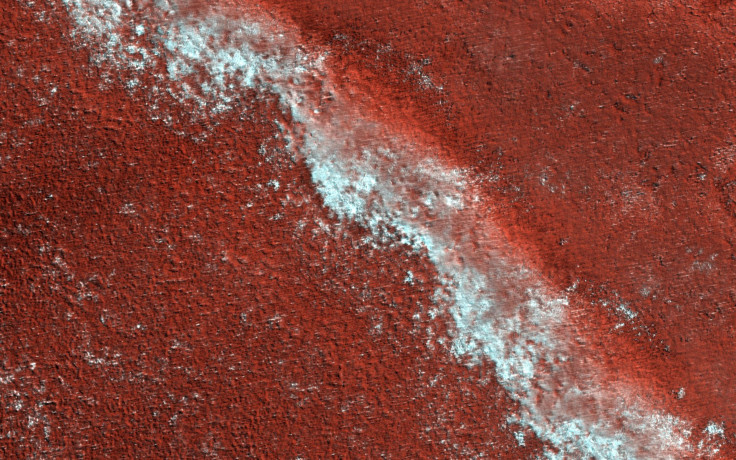NASA Captures Incredible Image Of Cake-Like Polar Ice Cap On Mars

KEY POINTS
- NASA was able to photograph an ice cap on Mars
- The ice cap looks like the layers of a cake
- NASA believes the layers contain traces of Mars' climate changes
NASA was able to capture a stunning photo of the polar ice cap on Mars. According to the agency, the various layers of the ice cap reveals the history of climate change on the Red Planet.
NASA’s latest photo of Mars was taken using the High Resolution Imaging Experiment (HiRISE) camera of the agency’s Mars Reconnaissance Orbiter (MRO). This robotic satellite has been studying Mars and taking photos of its surface from its orbit since reaching the planet in 2006.
The photo captured by the MRO features the dark red surface of Mars. Streaking across the landscape like frosting on a cake is an ice cap that’s part of the Red Planet’s north pole. NASA explained that the ice cap is made up of various layers that are composed of dust particles mixed with frozen water.
As noted by NASA, the seasonal carbon dioxide frost makes the ice cap look like a layer of tiramisu cake.
“This image of an exposed section of the north polar layered deposits (NPLD) looks much like a delicious slice of layered tiramisu,” the agency said in a statement.
“The NPLD is made up of water-ice and dust particles stacked one on top of the other. However, instead of icing, layers are topped with seasonal carbon dioxide frost, as seen here as lingering frost adhering to one of the layers,” NASA added.
Aside from the composition of the layers, NASA was also able to gather important data from the ice cap regarding the history of climate change on Mars. According to the agency, the layers of the ice cap could have air pockets containing traces of the Red Planet’s atmosphere.
The agency believes that taking samples from these air pockets would reveal the distinct characteristics of Mars’ climates.
“The high-resolution and color capabilities of the Mars Reconnaissance Orbiter's HiRISE camera provides details on the variations in the layers,” NASA explained. “Scientists are also using radar data, which show us that they have continuity in the subsurface. During deposition, these complex layers might encapsulate tiny air pockets from the atmosphere which, if sampled, could be studied to understand linkages to previous climates.”
© Copyright IBTimes 2025. All rights reserved.





















